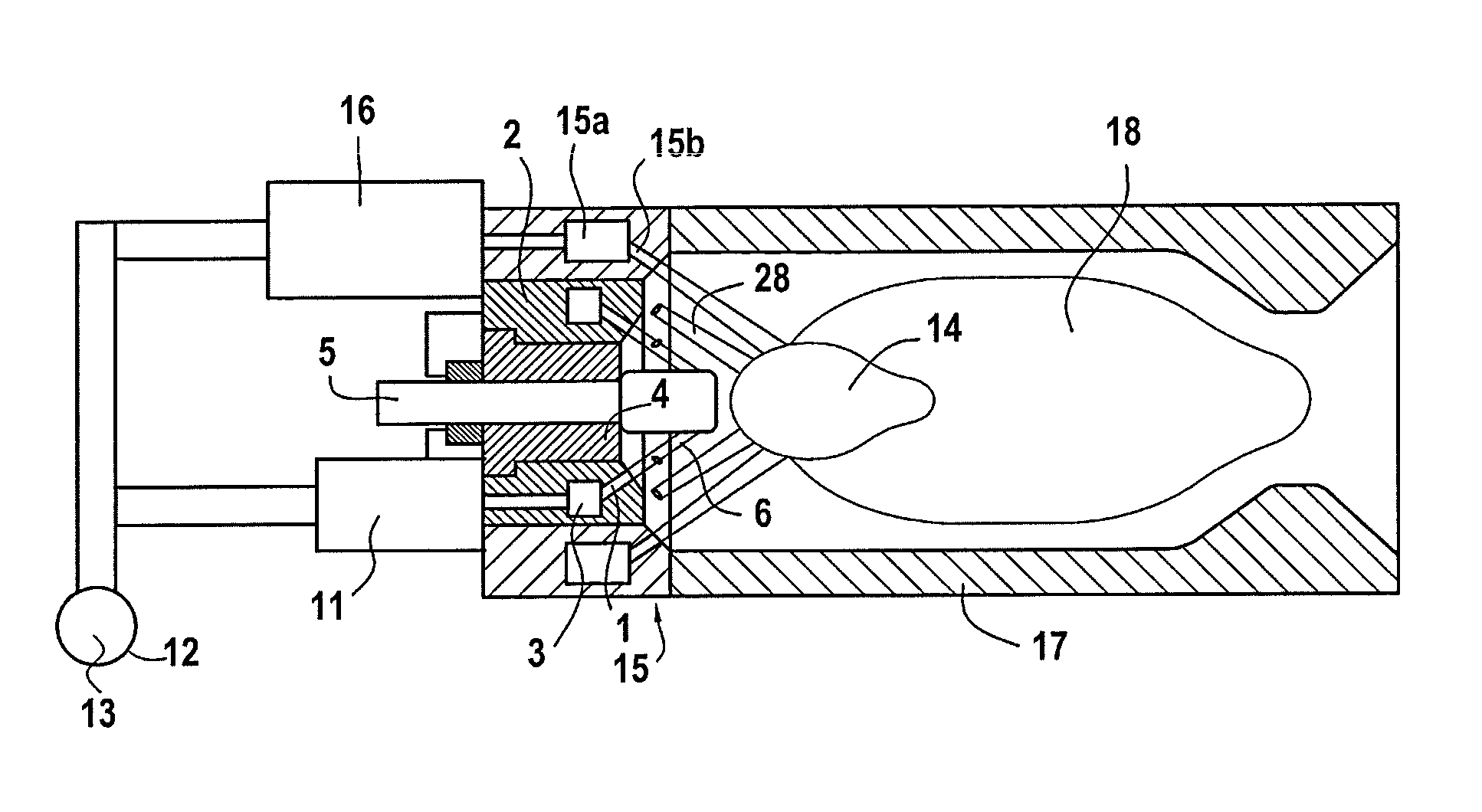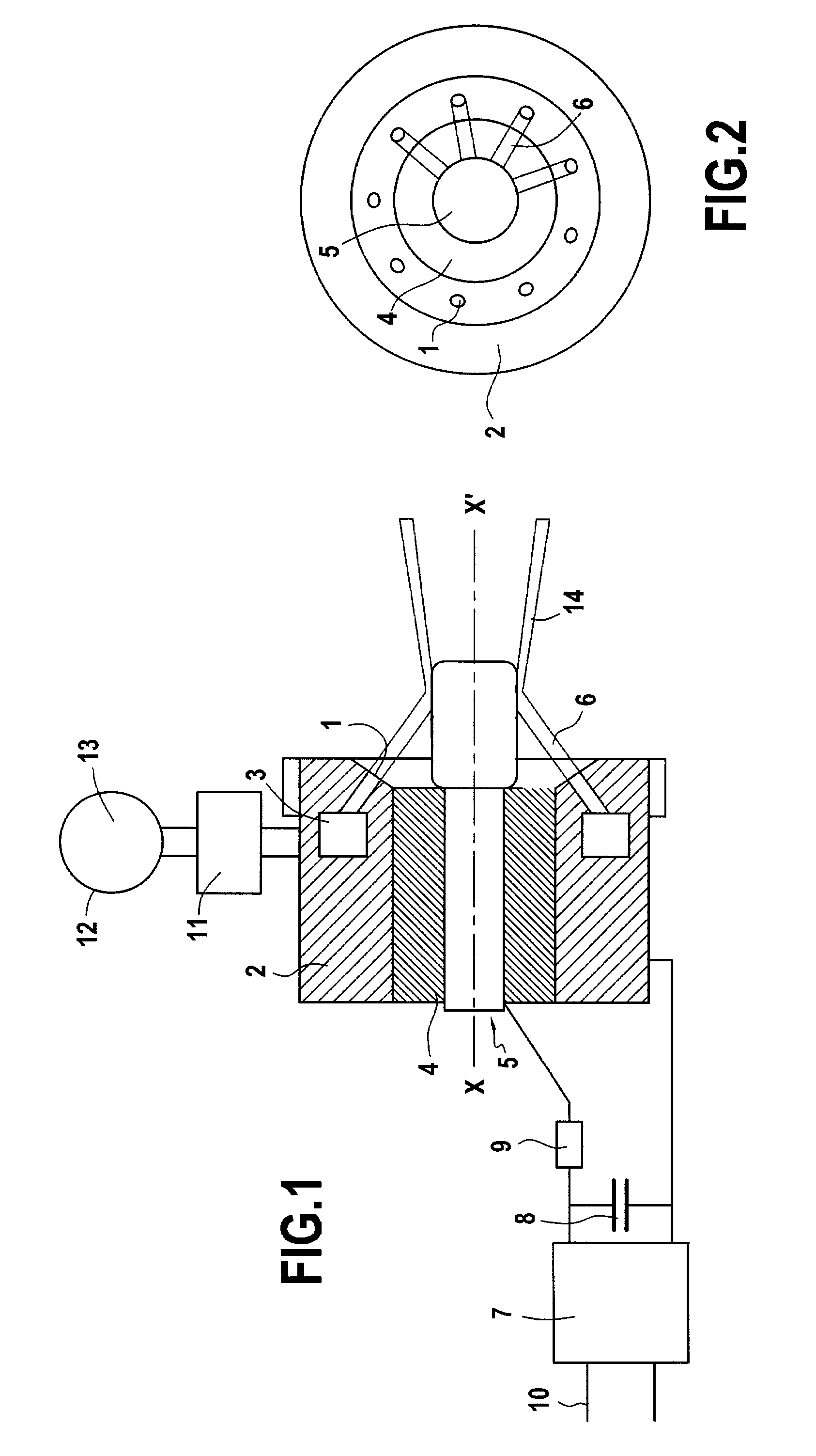Electrolytic igniter for rocket engines using monopropellants
a rocket engine and electrolytic technology, applied in the direction of rocket engine plants, machines/engines, hot gas positive displacement engine plants, etc., can solve the problems of high toxicity, additional complication, and provide a specific impulse that is limited in practice to 330 seconds, and achieves instantaneous power high level
- Summary
- Abstract
- Description
- Claims
- Application Information
AI Technical Summary
Benefits of technology
Problems solved by technology
Method used
Image
Examples
Embodiment Construction
[0071]With reference to FIG. 1, there can be seen a first example of an electrolytic ignitor of the invention designed to be incorporated in a main injector that is for mounting to a combustion chamber of a mono-propellant rocket engine.
[0072]The electrolytic ignitor comprises an injector 2 that, in the example described, presents a potential close to electrical ground and constitutes a cathode.
[0073]The injector 2 comprises an electrolytic injector device with an electrolyte distribution channel 3 associated with at least one injection hole 1, or preferably with a plurality of injection holes 1 enabling free jets to be projected towards a central electrode 5 that is electrically insulated from the body of the injector 2 by an insulator 4.
[0074]In the example described, the central electrode 5 forms an anode and extends axially downstream beyond the injector 2.
[0075]The electrolyte distributor 3 is fed via a solenoid valve 11 from a tank 12 containing an electrolyte 13 that is advan...
PUM
 Login to View More
Login to View More Abstract
Description
Claims
Application Information
 Login to View More
Login to View More - R&D
- Intellectual Property
- Life Sciences
- Materials
- Tech Scout
- Unparalleled Data Quality
- Higher Quality Content
- 60% Fewer Hallucinations
Browse by: Latest US Patents, China's latest patents, Technical Efficacy Thesaurus, Application Domain, Technology Topic, Popular Technical Reports.
© 2025 PatSnap. All rights reserved.Legal|Privacy policy|Modern Slavery Act Transparency Statement|Sitemap|About US| Contact US: help@patsnap.com



